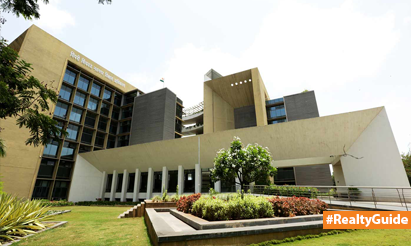Pune Shows a Sharp Rise in Residential Real Estate Market Demand
According to Magicbricks’ most recent PropIndex Report for Q2, 2022, the Indian residential real estate market demonstrated strength in Q2, 2022, with pan India residential demand growing by a rate of 16.9 percent QoQ and 27.7 percent YoY and supply by a rate of 2.9 percent QoQ and 16.2 percent YoY. The growth shows a positive recovery from the pandemic-induced slowdown and the overall financial recovery across industries.
An increase in housing demand in thirteen Indian towns demonstrates financial recovery and stabilization of incomes. This is also being spurred by households returning to the subways when businesses and educational institutions reopen. We see widespread consumer confidence and anticipate the Indian housing marketplace to continue developing within the coming quarters, even though rising inflation, global delivery chain disruption, rising cloth charges, and loan costs are driving costs higher.
1. Housing demand in Bengaluru had a significant rise, up 18.8% QoQ, while delivery saw a 6.7% QoQ increase. Large homes became a popular choice, with 3BHK accounting for 49 percent of general demand and 43 percent of general supply.
2. The presence of IT corridors and job centers has propelled Chennai’s housing market through an increase in demand along the shore. Demand increased by 13.0 percent QoQ while delivery increased by 5.1 percent QoQ, with a 1.6 percent QoQ increase in domestic common expenses. Homebuyers in the area seem to choose high-quality and mid-range real estate over affordable dwellings.
3. With a growth of 47.2 percent QoQ and a choice for mid-range properties, Delhi’s housing demand increased by about 1.5 times, and delivery increased to 10.8 percent QoQ. Real estate costs also increased by a total of 2.5 percent in comparison to the previous region. The 2BHK and 3BHK home types, which together accounted for 82 percent of the demand proportion, dominated the housing market. Combination housing demand increased 19.3 percent QoQ in Noida and Greater Noida, while deliveries decreased by 1.6 percent and common costs increased by 3.1 percent.
4. The housing market in Ahmedabad had a 21.4 percent QoQ increase in demand as well as a 4.7 percent QoQ increase in supply. The average price also increased by 1.6 percent in comparison to the previous quarter. With demand and supply at 45 and 46 percent, respectively, and a drop in demand for top-tier real estate to 12 percent in Q2 2022, the 3BHK entities continue to hold the bulk of the market share.
5. Due to the need for affordable real estate, Kolkata’s housing market has been forced. Demand increased employing 21.2 percent QoQ while supply increased by five.1 percent QoQ. Average real estate investment expenses increased by 1.7 percent in comparison to the previous region, with 2 and 3 BHK configurations accounting for 87 percent of both overall demand and overall supply.
6. The housing market in Mumbai had a 16.5% QoQ increase in demand, driven by a surge in demand in the western suburbs. At the same time, supply increased by 4.5% QoQ. Average prices increased by 1.2 percent in comparison to the previous quarter. In Q2 2022, demand and supply for the 2BHK configuration were 43 percent and 44 percent, respectively.
7. Pune had a sharp increase in demand (from 3.9 percent in Q1 2022 to 8.1 percent in Q2 2022) as well as in average prices (from 0.5 percent in the prior quarter to 1.3 percent in Q2 2022). The supply trend was inverse (from 2.2 percent to -2.0 percent withinside the cutting-edge area).
8. In Hyderabad, despite regulatory changes, home developers continued to refuse even in the second half of 2022. The fact that the national government has implemented steps to prevent wrongdoing this quarter is promising. Overall, there was a strong demand for housing (0.2 percent QoQ rise), and the average price increased by about 3 percent.
Disclaimer: The views expressed above are for informational purposes only based on industry reports and related news stories. PropertyPistol does not guarantee the accuracy, completeness, or reliability of the information and shall not be held responsible for any action taken based on the published information.




